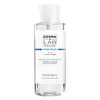What's inside
What's inside
 Key Ingredients
Key Ingredients

 Benefits
Benefits

 Concerns
Concerns

 Ingredients Side-by-side
Ingredients Side-by-side

Water
Skin ConditioningGlycerin
HumectantCyclopentasiloxane
EmollientButylene Glycol
HumectantAlcohol Denat.
AntimicrobialBetaine
HumectantCyclohexasiloxane
EmollientMethyl Gluceth-20
HumectantDipropylene Glycol
HumectantGlycereth-26
HumectantSilica
AbrasiveOctyldodeceth-16
EmulsifyingPEG-60 Hydrogenated Castor Oil
EmulsifyingPolyacrylate-13
Polyisobutene
Chlorphenesin
AntimicrobialDimethiconol
EmollientCaprylyl Glycol
EmollientEthylhexylglycerin
Skin ConditioningArgania Spinosa Kernel Oil
EmollientCarbomer
Emulsion StabilisingParfum
MaskingArginine
MaskingXanthan Gum
Emulsifying1,2-Hexanediol
Skin ConditioningAdenosine
Skin ConditioningPolysorbate 20
EmulsifyingSorbitan Isostearate
EmulsifyingCaramel
Cosmetic ColorantDisodium EDTA
Dipotassium Glycyrrhizate
HumectantSodium Hyaluronate
HumectantCyclotetrasiloxane
EmollientArtemisia Vulgaris Extract
Skin ConditioningGold
Cosmetic ColorantCitrus Limon Fruit Extract
MaskingTripropylene Glycol
AntioxidantPropylene Glycol
HumectantPanax Ginseng Root Extract
EmollientAcetyl Octapeptide-3
HumectantWater, Glycerin, Cyclopentasiloxane, Butylene Glycol, Alcohol Denat., Betaine, Cyclohexasiloxane, Methyl Gluceth-20, Dipropylene Glycol, Glycereth-26, Silica, Octyldodeceth-16, PEG-60 Hydrogenated Castor Oil, Polyacrylate-13, Polyisobutene, Chlorphenesin, Dimethiconol, Caprylyl Glycol, Ethylhexylglycerin, Argania Spinosa Kernel Oil, Carbomer, Parfum, Arginine, Xanthan Gum, 1,2-Hexanediol, Adenosine, Polysorbate 20, Sorbitan Isostearate, Caramel, Disodium EDTA, Dipotassium Glycyrrhizate, Sodium Hyaluronate, Cyclotetrasiloxane, Artemisia Vulgaris Extract, Gold, Citrus Limon Fruit Extract, Tripropylene Glycol, Propylene Glycol, Panax Ginseng Root Extract, Acetyl Octapeptide-3
Water
Skin ConditioningPropanediol
SolventPEG-6 Caprylic/Capric Glycerides
EmulsifyingPEG-7 Glyceryl Cocoate
EmulsifyingBetaine
HumectantSodium PCA
Humectant1,2-Hexanediol
Skin ConditioningBiosaccharide Gum-4
Skin ConditioningSodium Hyaluronate
HumectantXanthan Gum
EmulsifyingOphiopogon Japonicus Root Extract
Skin ConditioningEthylhexylglycerin
Skin ConditioningCeramide NP
Skin ConditioningEthyl Linoleate
EmollientCitric Acid
BufferingSodium Citrate
BufferingDisodium EDTA
Phenoxyethanol
PreservativeChlorphenesin
AntimicrobialWater, Propanediol, PEG-6 Caprylic/Capric Glycerides, PEG-7 Glyceryl Cocoate, Betaine, Sodium PCA, 1,2-Hexanediol, Biosaccharide Gum-4, Sodium Hyaluronate, Xanthan Gum, Ophiopogon Japonicus Root Extract, Ethylhexylglycerin, Ceramide NP, Ethyl Linoleate, Citric Acid, Sodium Citrate, Disodium EDTA, Phenoxyethanol, Chlorphenesin
Ingredients Explained
These ingredients are found in both products.
Ingredients higher up in an ingredient list are typically present in a larger amount.
1,2-Hexanediol is a synthetic liquid and another multi-functional powerhouse.
It is a:
- Humectant, drawing moisture into the skin
- Emollient, helping to soften skin
- Solvent, dispersing and stabilizing formulas
- Preservative booster, enhancing the antimicrobial activity of other preservatives
Betaine is a common humectant (a substance that promotes retention of moisture). It's known to be gentle on the skin and can help balance hydration.
This ingredient is best for improving hydration and soothing irritated skin. Studies also show it helps even out skin tone.
Fun fact: Betaine is naturally created in the skin and body. The kind found within cosmetic products can be either plant-derived or synthetic.
Another name for betaine is trimethylglycine.
Learn more about BetaineChlorphenesin is a synthetic preservative. It helps protect a product against bacteria in order to extend shelf life. In most cases, Chlorphenesin is paired with other preservatives such as phenoxyethanol and caprylyl glycol.
Chlorphenesin is a biocide. This means it is able to help fight the microorganisms on our skin. It is also able to fight odor-releasing bacteria.
Chlorphenesin is soluble in both water and glycerin.
Studies show Chlorphenesin is easily absorbed by our skin. You should speak with a skincare professional if you have concerns about using Chlorphenesin.
Learn more about ChlorphenesinDisodium EDTA plays a role in making products more stable by aiding other preservatives.
It is a chelating agent, meaning it neutralizes metal ions that may be found in a product.
Disodium EDTA is a salt of edetic acid and is found to be safe in cosmetic ingredients.
Learn more about Disodium EDTAEthylhexylglycerin (we can't pronounce this either) is commonly used as a preservative and skin softener. It is derived from glyceryl.
You might see Ethylhexylglycerin often paired with other preservatives such as phenoxyethanol. Ethylhexylglycerin has been found to increase the effectiveness of these other preservatives.
Sodium Hyaluronate is hyaluronic acid's salt form. It is commonly derived from the sodium salt of hyaluronic acid.
Like hyaluronic acid, it is great at holding water and acts as a humectant. This makes it a great skin hydrating ingredient.
Sodium Hyaluronate is naturally occurring in our bodies and is mostly found in eye fluid and joints.
These are some other common types of Hyaluronic Acid:
Learn more about Sodium HyaluronateWater. It's the most common cosmetic ingredient of all. You'll usually see it at the top of ingredient lists, meaning that it makes up the largest part of the product.
So why is it so popular? Water most often acts as a solvent - this means that it helps dissolve other ingredients into the formulation.
You'll also recognize water as that liquid we all need to stay alive. If you see this, drink a glass of water. Stay hydrated!
Learn more about WaterXanthan gum is used as a stabilizer and thickener within cosmetic products. It helps give products a sticky, thick feeling - preventing them from being too runny.
On the technical side of things, xanthan gum is a polysaccharide - a combination consisting of multiple sugar molecules bonded together.
Xanthan gum is a pretty common and great ingredient. It is a natural, non-toxic, non-irritating ingredient that is also commonly used in food products.
Learn more about Xanthan Gum